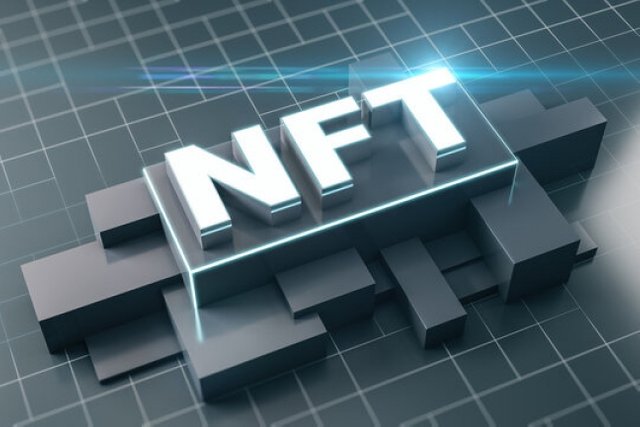What Innovations Are Shaping the User Experience in White Label NFT Platforms?
The explosive growth of the Non-Fungible Token market has led to an influx of white label NFT platforms, each vying for user attention. In this dynamic landscape, innovations play a pivotal role in shaping the user experience. From blockchain advancements to user interface enhancements, this blog explores the cutting-edge innovations that are revolutionizing the way users interact with white label NFT platforms.
What is white label NFT?
A white label NFT refers to a non-fungible token that is part of a customizable and rebrandable platform, allowing individuals or businesses to launch their own branded NFT marketplace without building it from scratch. "White label" signifies the ability to personalize and rebrand the platform with unique logos, color schemes, and brand identity. These NFTs are often created and traded on blockchain networks like Ethereum, Binance Smart Chain, or others, using smart contracts to represent unique digital assets. White label NFT platforms offer a turnkey solution for entrepreneurs to enter the NFT space swiftly, focusing on branding and user engagement while leveraging the underlying infrastructure provided by the white label solution.
Cutting-edge innovations
Blockchain Scalability Solutions:
One of the primary challenges faced by NFT platforms is the scalability of blockchain networks. Innovations like Layer 2 scaling solutions and blockchain interoperability are addressing these issues. Layer 2 solutions, such as Optimistic Rollups and zk-rollups, enable faster and more cost-effective transactions, reducing the strain on the underlying blockchain. Interoperability allows users to seamlessly engage with NFTs across different blockchains, opening up new possibilities for cross-platform experiences.
NFT Standard Evolution:
The evolution of NFT standards, such as ERC-1155, brings about increased flexibility and efficiency. Unlike its predecessor ERC-721, ERC-1155 allows for the creation of both fungible and non-fungible tokens within the same smart contract. This innovation enables a more diverse range of digital assets, from collectibles to in-game items, enhancing the variety of offerings on white label NFT platforms.
Gas Fee Optimization:
High gas fees have been a pain point for users engaging with NFTs on certain blockchains. Innovations in gas fee optimization, including layer 2 solutions and gas fee prediction algorithms, aim to provide users with more predictable and reasonable transaction costs. This ensures a smoother and more cost-effective experience for users minting, buying, and selling NFTs on white label platforms.
Dynamic and Interactive NFTs:
Innovations in NFT design are transforming static digital assets into dynamic and interactive creations. Smart contracts now support programmable features, allowing NFTs to change over time or respond to external stimuli. This innovation opens up new possibilities for artists and creators to offer engaging and evolving NFT experiences, contributing to a more immersive user experience.
Augmented Reality (AR) and Virtual Reality (VR) Integration:
The integration of AR and VR technologies into white label NFT platforms introduces a new dimension to the user experience. Users can visualize and interact with their NFTs in augmented or virtual environments, fostering a deeper connection between the digital and physical worlds. This innovation enhances the value proposition for collectors and enthusiasts who seek more than just a digital representation of their assets.
Social and Community Features:
White label NFT platforms are innovating by incorporating social and community features to foster a sense of belonging among users. Features such as user profiles, comments, and social sharing contribute to a vibrant community surrounding the platform. Some platforms even integrate decentralized autonomous organizations (DAOs), allowing users to have a say in the governance and evolution of the platform.
Fractionalized Ownership:
Innovations in fractionalized ownership make NFTs more accessible to a broader audience. Users can purchase fractions of high-value NFTs, enabling collective ownership and investment. This democratization of access to premium digital assets aligns with the principles of decentralization and inclusivity, expanding the user base of white label NFT platforms.
AI-Powered Curation and Recommendation Systems:
Leveraging artificial intelligence (AI), white label NFT platforms are enhancing content curation and recommendation systems. AI algorithms analyze user preferences, transaction history, and market trends to offer personalized recommendations. This innovation streamlines the discovery process for users, helping them find NFTs that align with their interests and preferences.
Conclusion:
In the ever-evolving landscape of white label NFT platforms, innovations continue to shape the user experience, offering new possibilities and addressing existing challenges. From blockchain scalability solutions to dynamic NFTs and AI-powered curation, these innovations contribute to a more immersive, accessible, and enjoyable user journey. As the NFT space matures, we can expect further advancements that will redefine the way users engage with digital assets on white label platforms, ushering in a new era of creativity and community in the world of NFTs.
